International Geneva
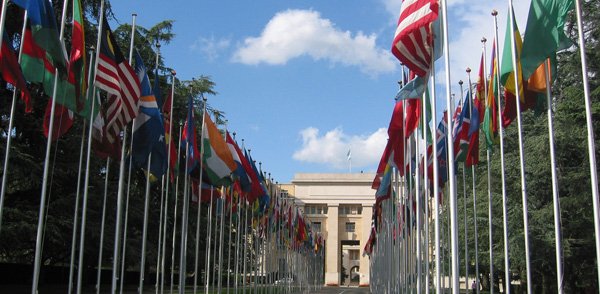
Geneva is ranked in the world’s top ten cities for quality of life, with shops, culture and fine food on its doorstep. From the mesmerising water fountain to the snowy peak of Mont Blanc, the city offers magnificent scenery. A centre of excellence, Geneva is the birthplace of fine watchmaking and offers an exceptional array of luxury hotels. The city hosts many high-profile events throughout the year such as SIHH and Les Fêtes de Genève. As the capital of peace that saw the founding of the Red Cross, Geneva is the European headquarters of the United Nations and is home to more than 200 international organisations.
The water fountain (Le jet d'eau)
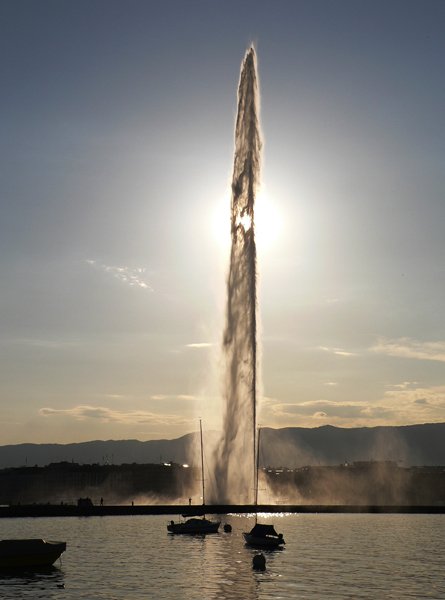
One of the most recognisable symbols of Geneva, the water fountain attracts tourists from all over the world. However, very few know its history. Created by accident, it is closely linked with the history of Geneva’s watchmakers: the “cabinotiers”.
“Cabinotier” is the name given to the 4,000 or so watchmakers of the city in the 18th century who worked at home or in small workshops, often tiny “cabinets” in their own homes. The high pressure pipes of the Coulouvrenière factory led to the development of small piston engines which came to rival steam engines. These were soon adopted by the cabinotiers, who installed them in their workshops.
The first water fountain to be created by accident, due to an explosion of one of the pumps, the jet d’eau, enabled engineers to discover a means of controlling the pressure in the pumps, and went on to become a symbol of Geneva.
Clocks in Geneva
Geneva is the birthplace of Swiss watchmaking, and although the “manufactures” have deserted the city centre, a stroll around its streets reveals the extent to which watchmaking is still present.
The floral clock
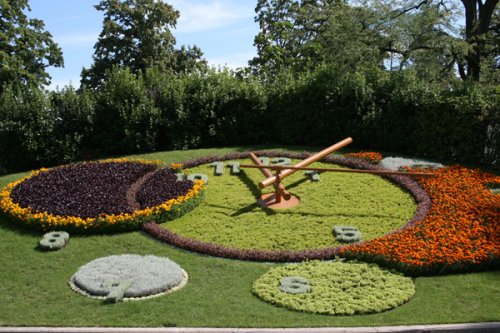
The floral clock was planted here in 1955. It consists of eight circles in colours that vary naturally with the seasons, being planted with 6,500 flowers. The seconds hand is the longest in the world, at 2.5 metres.
The mechanical clock of Hôtel Cornavin
Another record-breaking clock is the one inside Hôtel Cornavin, on Boulevard James-Fazy. It has the longest clock pendulum in the world, measuring precisely 30 metres and 2 centimetres. It stretches from the hotel’s ground floor right up to the ninth floor.
The Passage Malbuisson clock
The clock found in Passage Malbuisson, designed by Edouard Wirth, is also worth a detour. Its 16 bells mark every hour with their chimes inspired by a song from the Escalade, Geneva’s traditional festival commemorating the Savoyards’ attack on the city in 1602. The clock was built in 1962.
The cabinotiers
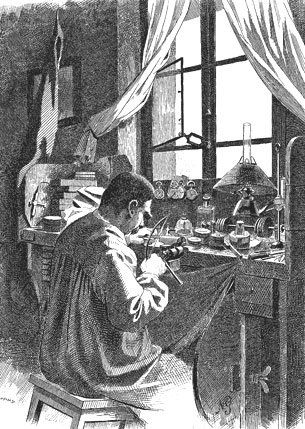
The art of the Saint-Gervais cabinotiers involved meticulous workmanship, technical precision and innovation, and contributed to Geneva's reputation as much as the Reformation did. It was an important driver of the city’s economic prosperity. It also brought to the working class but cultivated district an irreverent, inquiring spirit and support for popular causes. The term “cabinotiers” refers to all skilled craftsmen working in watchmaking, such as those specialising in case assembly, guilloche work, chasing, casing up, gilding and enamelling. Women, too, were occupied in making chains and polishing movement parts and cases. Talented miniaturists painted on enamel, beginning the tradition of luxury watches. In 1800, the Fabrique provided 5,000 of the city’s 26,000 inhabitants with a living.
The cabinotiers built themselves a solid reputation founded on the quality of their work, their meticulousness and precision. They were envied by other workers, and were considered to have a higher status. They formed a type of workers’ aristocracy, seeing themselves as artists: they were cultivated and keen readers, and supported Rousseau and Voltaire. Stendhal expressed his admiration for them, observing that in Geneva it was not rare to see a common watchmaker with little education publish a political pamphlet to promote his views.
The Ecole d'Horlogerie de Genève
Established in 1823, the Ecole d’Horlogerie de Genève perpetuates the city’s know-how through its younger generations.
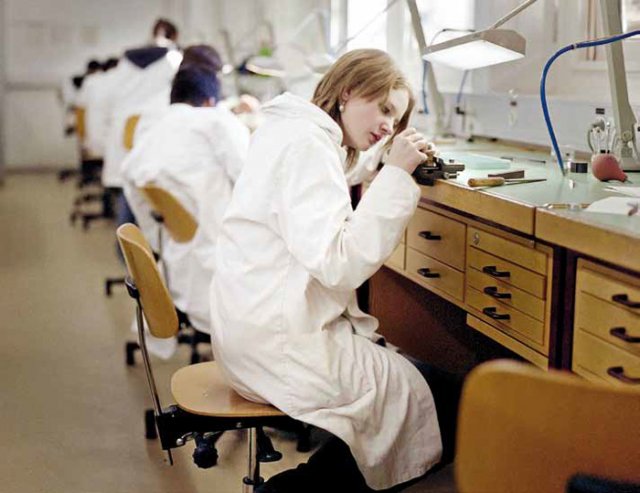
On Place Longemalle, formerly Place de la Grenette, each student had to come from Geneva and had to pay for his own tuition, supply his own tools and demonstrate his commitment for three months before being formally admitted. The lessons, which began at 5 o’clock in the morning in the summer, and 6 o’clock in the winter, ran from Monday to Saturday and were conducted in the glow of oil lamps...
The school moved frequently over time due to its changing needs. In 1879, a building was constructed on Rue Necker, where the increasing number of girls could attend classes. After the crisis, in 1933, it was decided to merge the school with the Ecole des Arts et Métiers, before moving it to the Petit-Lancy district in 1966.
Today, the Ecole d’Horlogerie is on Rue du Pont-Butin, attended by 238 students every year, taught by 26 specialist tutors as well as general teaching staff. Studying in three specific areas, their courses are state funded and culminate in the famous CFC – the “certificat fédérale de capacité”. The school’s director Pierre Amstutz is responsible for both the administration and relations with companies (Rolex, Vacheron Constantin, Chopard and Patek Philippe) where students undertake their internships.
While conditions are much more comfortable than in the 19th century, the lessons are just as demanding. During their studies, students are required to make a complete complicated “school watch” eligible for Poinçon de Genève certification. Around 30 graduates become watchmakers every year.
